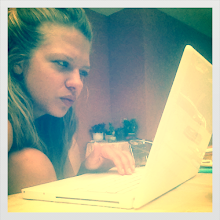 I have been telling you about jazz festivals around, but never mentioned anything about jazz in Croatia, so I have decided to tell you about the 3rd Zagreb Jazz Festival! Yes, we have a festival too! This year, third in a row, we have the opportunity to hear great musicians from all over the world. Last year the highlight was the appearance of the jazz legend Wayne Shorter, along with Joe Lovano, James Blood Ulmer, Vernon Reid, Pee Wee Ellis and Brian Blade.
I have been telling you about jazz festivals around, but never mentioned anything about jazz in Croatia, so I have decided to tell you about the 3rd Zagreb Jazz Festival! Yes, we have a festival too! This year, third in a row, we have the opportunity to hear great musicians from all over the world. Last year the highlight was the appearance of the jazz legend Wayne Shorter, along with Joe Lovano, James Blood Ulmer, Vernon Reid, Pee Wee Ellis and Brian Blade.This year, Chick Corea & Bela Fleck who will perform on the 2nd November, Joshua Redman Trio, on the 3rd and Ornette Coleman Quartet on the 4th.
Chick Corea is one of the most important and most popular jazz pianists in the past 40 years, an influential protagonist of fusion jazz and a composer who includes ethno and classical elements into his music. During his career he has received 14 Grammies, two of which were for his album "The Ultimate Adventure" (2007). He will be joined by Bela Fleck, a virtuoso benjo player.
Joshua Redman is a popular tenor sax player of his generation, often compared to older cats like Dexter Dordona i Sonny Rollins. Son of Dewey Redmana, a distinguished tenor sax player who worked with the great Ornette Coleman, an important figure for avant-garde jazz, got his spotlight in the media right after the release of his first album, so in 1993 the Rolling Stone and Down Beat proclaimed him the new artist of the year. His colleagues Pat Metheny and Chick Corea, with whom he performed in the '90s, praise him as well. A decade and a half later, he becomes an equally huge performer and justifies all the compliments he was welcomed with when he entered the scene.
Being the initiator of avant-garde jazz and starting a new chapter in the history of jazz, alt sax player, violinist and a composer, Ornette Coleman, is one of the cultural icons of the 20th century. He got a Pulitzer prize for music, for the first time given to a record, Coleman's concert album "Sound Grammar", as well as a Grammy award for the life achievement.
As you can see, it is worth coming! Hope to see you there from 2nd to 4th November in Zagreb, Croatia!
















